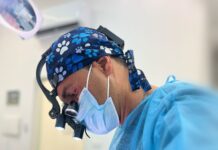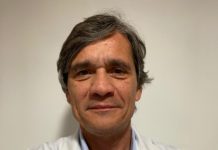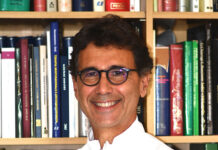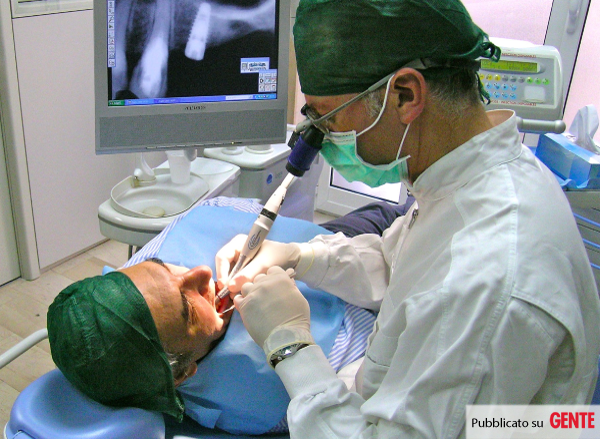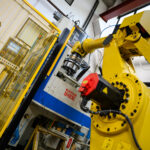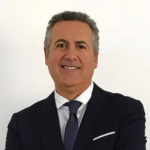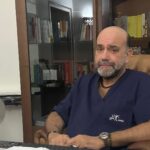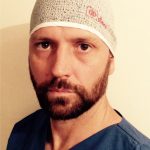Technology at the service of the patient …
Digital technologies are rapidly emerging even in modern dentistry: computerized procedures, latest-generation materials and increasingly accurate diagnostic tools are opening the way to new therapeutic horizons, thanks to which patients can achieve truly extraordinary results. New and sophisticated tools such as intra / extraoral scanners, Cone Beam Computed Tomography (Cbct), Cad-Cam software and innovative manufacturing techniques (3D printing and stereolithography) are radically changing the way patients are treated, and their perception of interventional methods, always less aggressive and invasive. To illustrate the latest frontiers of modern dentistry is the dott. Maurizio Macrì, well known dentist in Naples, specialized in complex prosthetic rehabilitations in all-ceramic, implanta-prosthesis, gnathology and in prevention of oral cancer with the use of a modern cytology sampling method for scarifying the area to be examined. With the Department of Structures of the University of Naples, through a research convention, he is planning to study innovative systems of mechanical optimization to customize prosthetic implants and increase their resistance, also taking advantage of the most modern 3D printing techniques.
Dr. Macrì, what technologies can the patient benefit from today?
In recent years there has been an extraordinary spread of digital technologies and clinicians have therefore had to change their way of thinking and working. In this revolutionary scenario, the most advanced dental practices will use a 3D printer in their working routine, thanks to which it will be possible to make prosthetic restorations, much more quickly and efficiently than traditional methods. The 3D scan of the dental arches allows, in fact, to acquire perfect images and to make a prosthesis, a implant or a bone graft of biocompatible material “personalized” according to the individual patient, directly in the studio and in a short time. The scans, saved in a real “database”, will allow the professional to preserve over time all the information of each patient’s dental arches, allowing him to realize fixed prosthetic restorations that are completely identical to the natural teeth of each individual person. The step with the technology cannot however be disconnected from the one with the Science: for this reason, thanks to the precious collaboration with the prof. Massimiliano Fraldi (professor of mechanical engineering biological fabrics at the University of Naples Federico II) I started an innovative research project that integrates 3D printing and optimal design of the implants and of the mechanical properties of the materials for dentistry.
Speaking of “revolution” one cannot speak of the new materials used today?
Thanks to increasingly evolved materials (zirconia, integral ceramics, etc.), which guarantee an always better match with the appearance and the original color of natural teeth, it is possible to realize prosthetic restorations that are absolutely biocompatible and integrable, such as to allow a success in long-term and able to minimize the risk of a possible rejection.
Let’s talk about implant surgery: nowadays are more and more minimally invasive techniques spreading?
Absolutely yes. The modern implant surgery, which allows the restoration of a correct masticatory function, aims to ensure the patient, who is facing a prosthetic operation, the least possible pain and the best post-operative course. The modern minimally invasive surgical techniques, which are decidedly not very aggressive, require that for the positioning of the implants it is not even necessary to open a surgical flap (flapless) with the scalpel, thereby minimizing the consequent sutures. These techniques offer numerous advantages: they minimize post-operative pain and the risk of intra and post-operative bleeding and allow the patient the immediate recovery of mouth function and daily and work activities. Also from this point of view, therefore, the continuous progress of science and techniques allows to increase the comfort of the patient. In the case of guided surgery through 3D software, for example, the incisions, if necessary, are done with millimetre precision, and then insert the dental implants in titanium or zirconia. In conclusion, today the dentist seeks personalized and effective care and treatment courses that have the least possible impact from a physical and psychological point of view, increasing comfort and safety in the operating room. In a constantly changing scenario, I believe that the most attentive professionals have the duty to intercept the most advanced requests of Research and to respond enthusiastically to the challenges posed by innovation, to contribute to the well-being of all and to play the role of leading the way dentistry has always played in medicine, especially for the applications of new materials and technologies.
More info (studioodontoiatricomacri@gmail.com) (www.studioodontoiatricomacri.it), 0815604834








